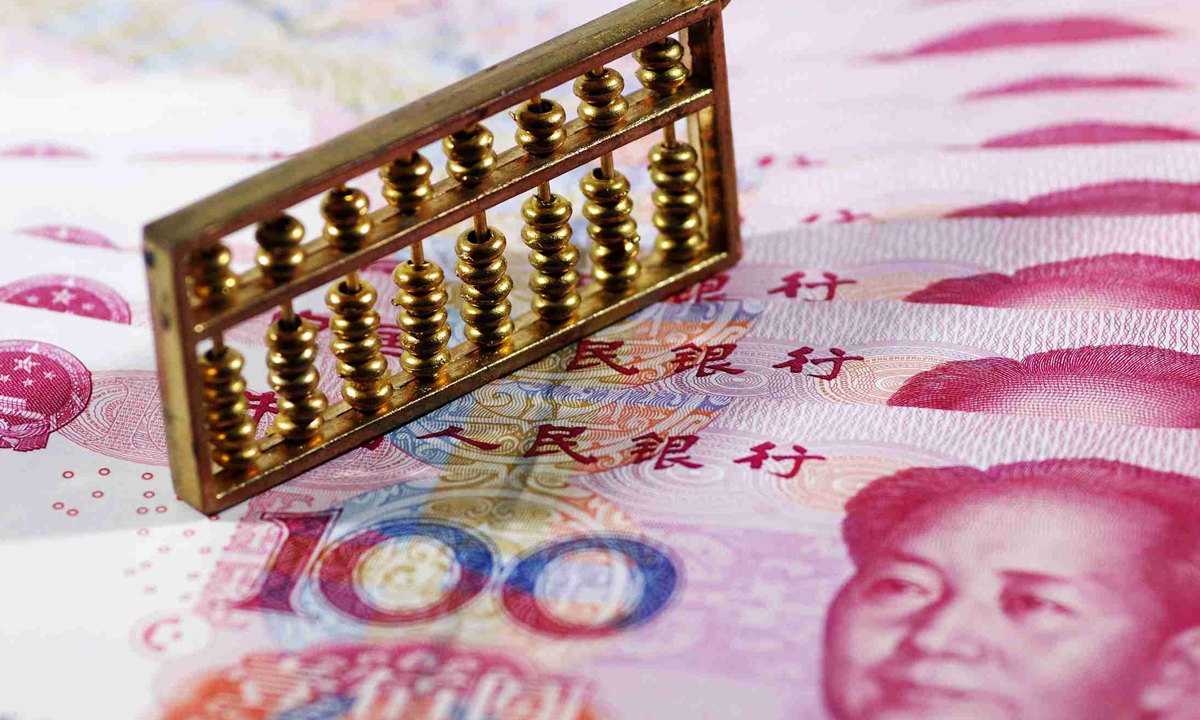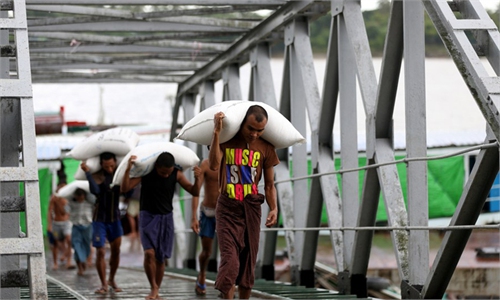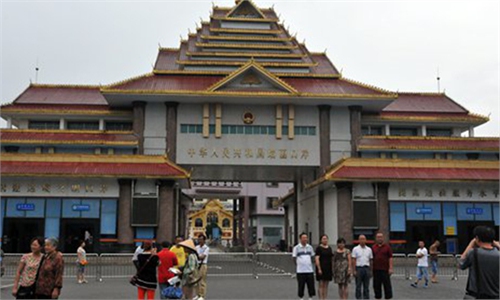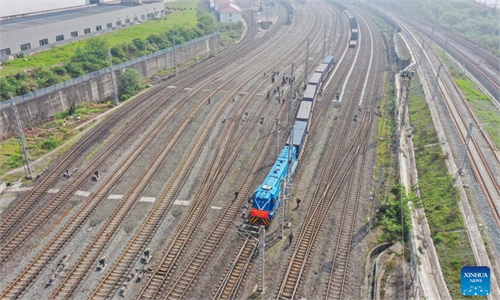China, Myanmar ‘steadily’ expand use of yuan in bilateral trade despite ‘setbacks’: source
Settlements carried out as planned despite ‘small setbacks’: source

rmb File photo:VCG
Yuan-denominated settlement in China-Myanmar border trade hit over 500 million yuan ($74.44 million) in the first half of 2022 despite the closure of most border ports in the first three months due to epidemic prevention and control and other "small setbacks," marking a significant achievement since the Myanmar government accepted yuan as an official settlement currency for border trade in December, the Global Times learned.
The transaction volume, which is also in line with a plan that sets the initial target at 2 billion yuan, marks an important step in the yuan's internationalization among ASEAN members, which, analysts said, is facilitated by booming bilateral trade and a growing desire of developing economies to include the yuan to enrich their foreign exchange reserves.
"We stay in tandem with yuan's settlement plans laid out in December despite certain small setbacks, and are steadily expanding the use of the yuan in bilateral trade," a source close to the matter told the Global Times on the condition of anonymity on Monday, adding that 500 million yuan in border trade settlement with Myanmar is a "remarkable achievement."
The Myanmar government accepted the yuan as an official settlement currency for border trade with China - its biggest trading partner and its largest source of foreign investment in December last year. The Global Times reported earlier that the estimated settlement scale in the pilot phase is about 2 billion yuan, which is equivalent to about 30 percent of the value of bilateral border trade via inland routes.
"Our plans to push forward the yuan's settlement in 'big trade' are being carried out as scheduled. Currently, certain exports of seafood and agricultural products to China have been settled in yuan, and relevant banks submit such transactions to Myanmar's central bank case by case," the source said.
"Big trade" refers mainly to containerships carrying big commodities, marine products, machines and equipment.
On July 3, trade and commerce authorities from Myanmar informed the trading zone in Muse, one of Myanmar's main border trade points with China that payments settled in yuan should be switched back to dollars, according to a report on a Chinese-language website in Myanmar.
The source confirmed the news with the Global Times, saying that he has been informed although "has not received a formal notice," adding that the withdrawal of yuan-denominated settlement for certain border trading could only be seen as a small "setback," and would not affect the overall trend.
"The decision mainly aims to increase Myanmar's dollar foreign reserves. But the real impact on Myanmar trade is limited, as most border trade transactions are not processed through financial institutions and banks but through other forms," the source said.
According to the source, the order is applicable to local enterprises but not to financial institutions, which also gives leeway for banks to still settle the border trade in yuan.
Processing settlements in yuan is deemed as an important tool to address Myanmar's chronic shortages of foreign exchange reserves. A spokesperson for the Myanmar branch of Industrial and Commercial Bank of China (ICBC) told the Global Times that the successful expansion of yuan settlement in bilateral trade will help trade companies mitigate exchange losses and inject new dynamics into the virus-hit border trade.
ICBC completed the first yuan-denominated border trade in Myanmar on December 20. ICBC's Yangon branch said that as of June 22, the bank's yuan business has crossed 1 billion yuan and covers more than 90 percent of the yuan-denominated border trade settlement services between China and Myanmar.
More than 40 key enterprises participated in the Belt and Road Initiative in Myanmar have opened yuan accounts with the bank and based on these accounts, commercial banks can provide yuan deposits and loans to these enterprises, the bank said.
The cross-border yuan settlement trial between China and Myanmar is expected to have a demonstration effect and will help expand the scope of yuan settlement in border trade in other neighboring countries, Zhou Rong, a senior researcher at the Chongyang Institute for Financial Studies at Renmin University of China, told the Global Times, adding that there is high demand in Myanmar for trading with China.
The yuan's internationalization comes amid ever-closer economic and trade ties between China and ASEAN as well as rapid regional economic integration and connectivity under the Mekong-Lancang Cooperation (MLC) economic framework.
In 2021, trade between China and countries along the Mekong River reached $398 billion, up 23 percent year-on-year. Since it opened, the China-Laos railway has transported more than 800,000 tons of cross-border cargo of more than 100 types. The MLC special fund has supported more than 600 projects, including solar photovoltaic, the breeding of superior varieties of oil tea and the production of coffee, as the MLC makes important contributions to economic recovery and improvement of people's livelihood among the six Mekong-Lancang countries.
In a meeting between Chinese State Councilor and Foreign Minister Wang Yi and Myanmar's Foreign Minister U Wunna Maung Lwin on July 3, China and Myanmar agreed to speed up the construction of the China-Myanmar Economic Corridor (CMEC), implement well the cross-border power grid agreement, guarantee the operation of China-Myanmar oil and gas pipelines, explore the "CMEC plus" cooperation at a proper time, and elevate the level of bilateral trade and commercial cooperation.



